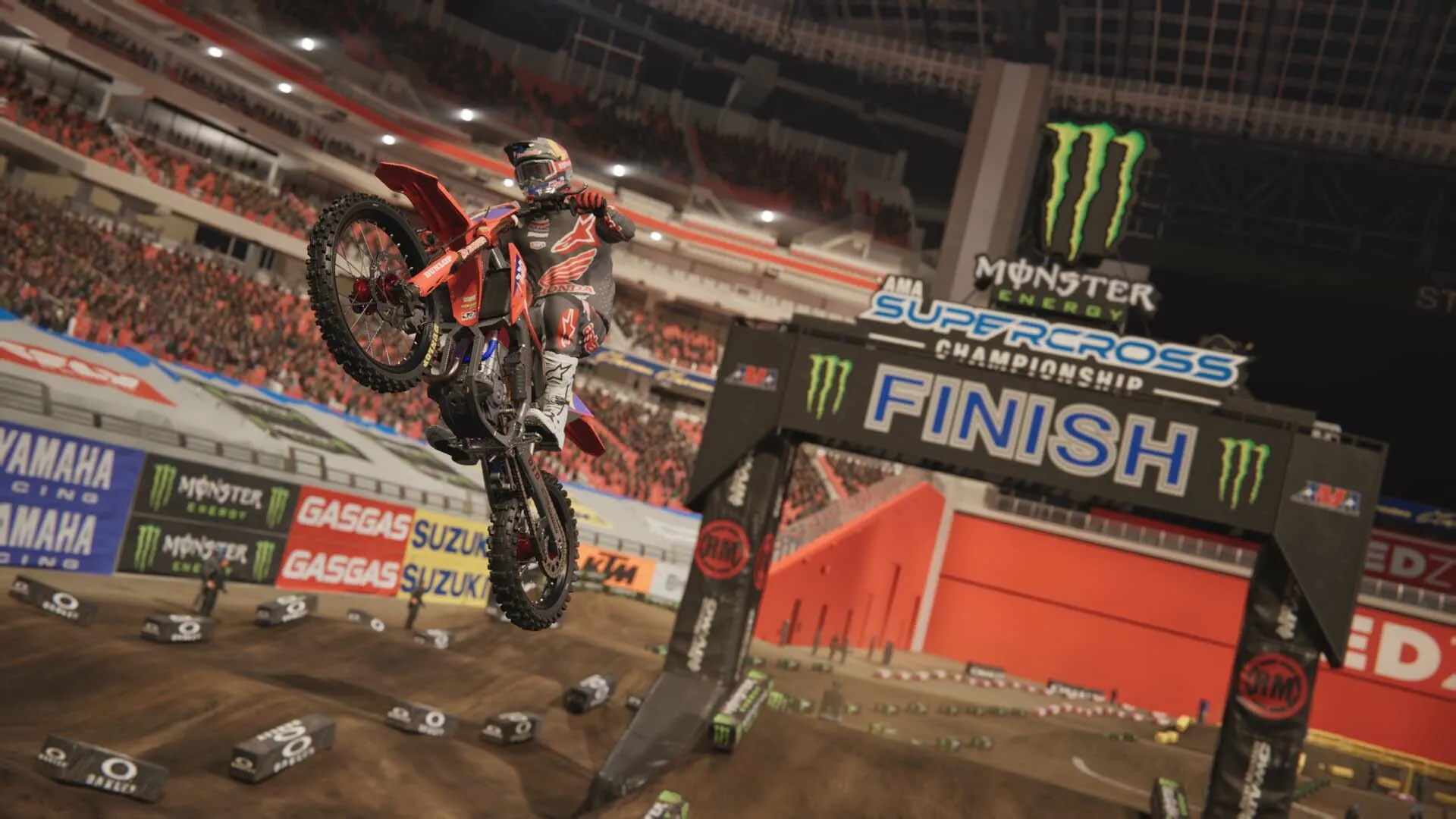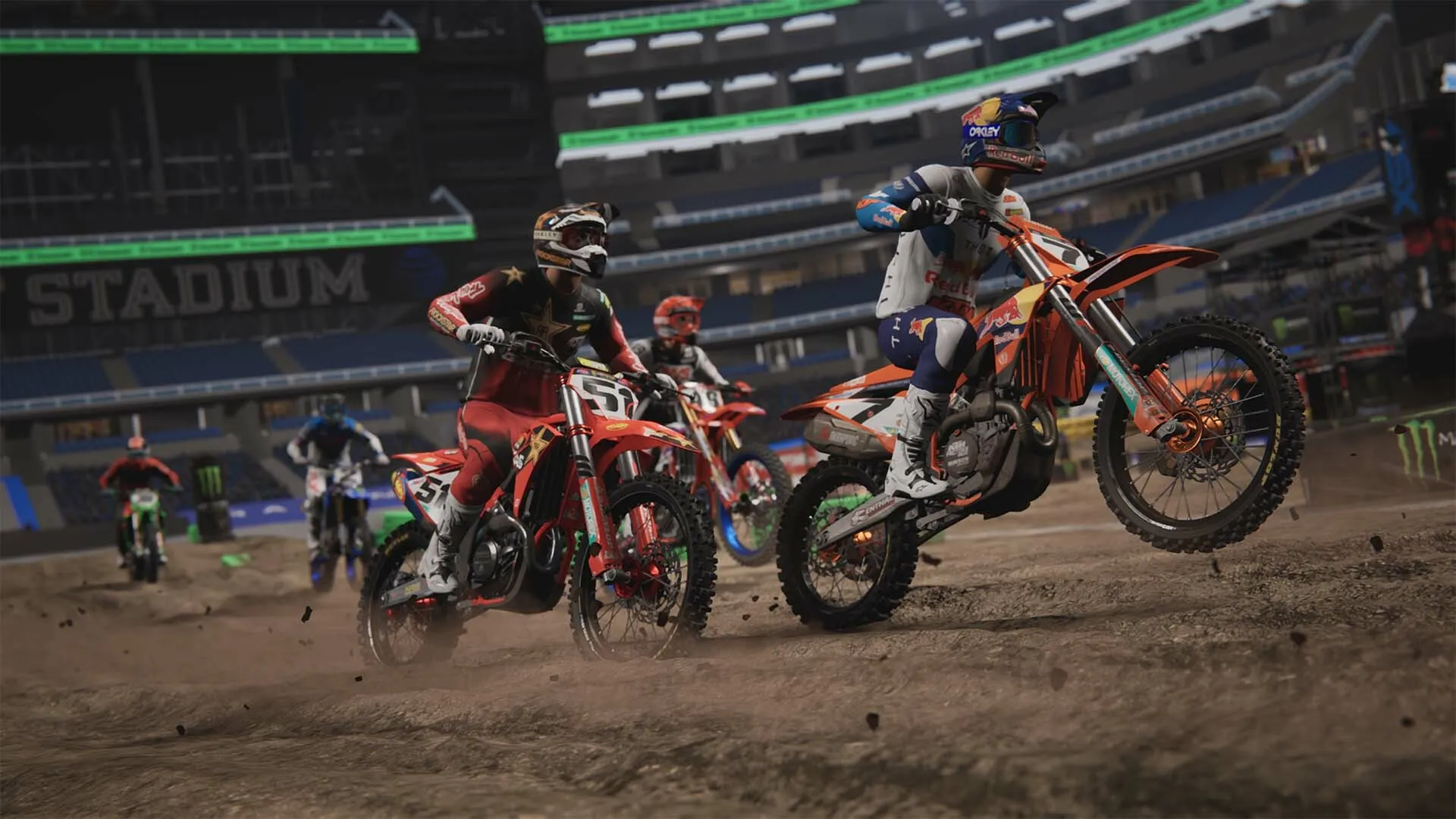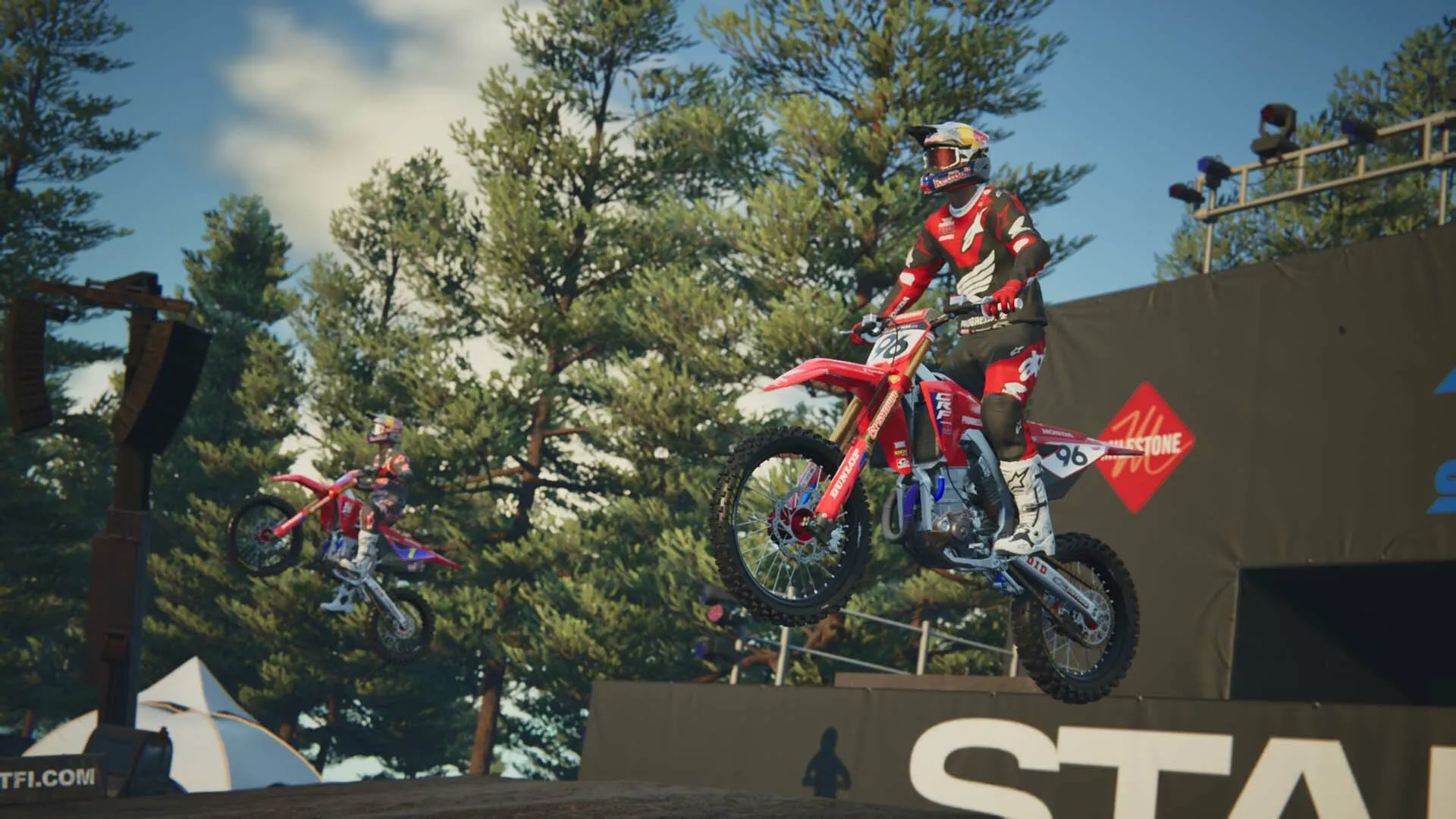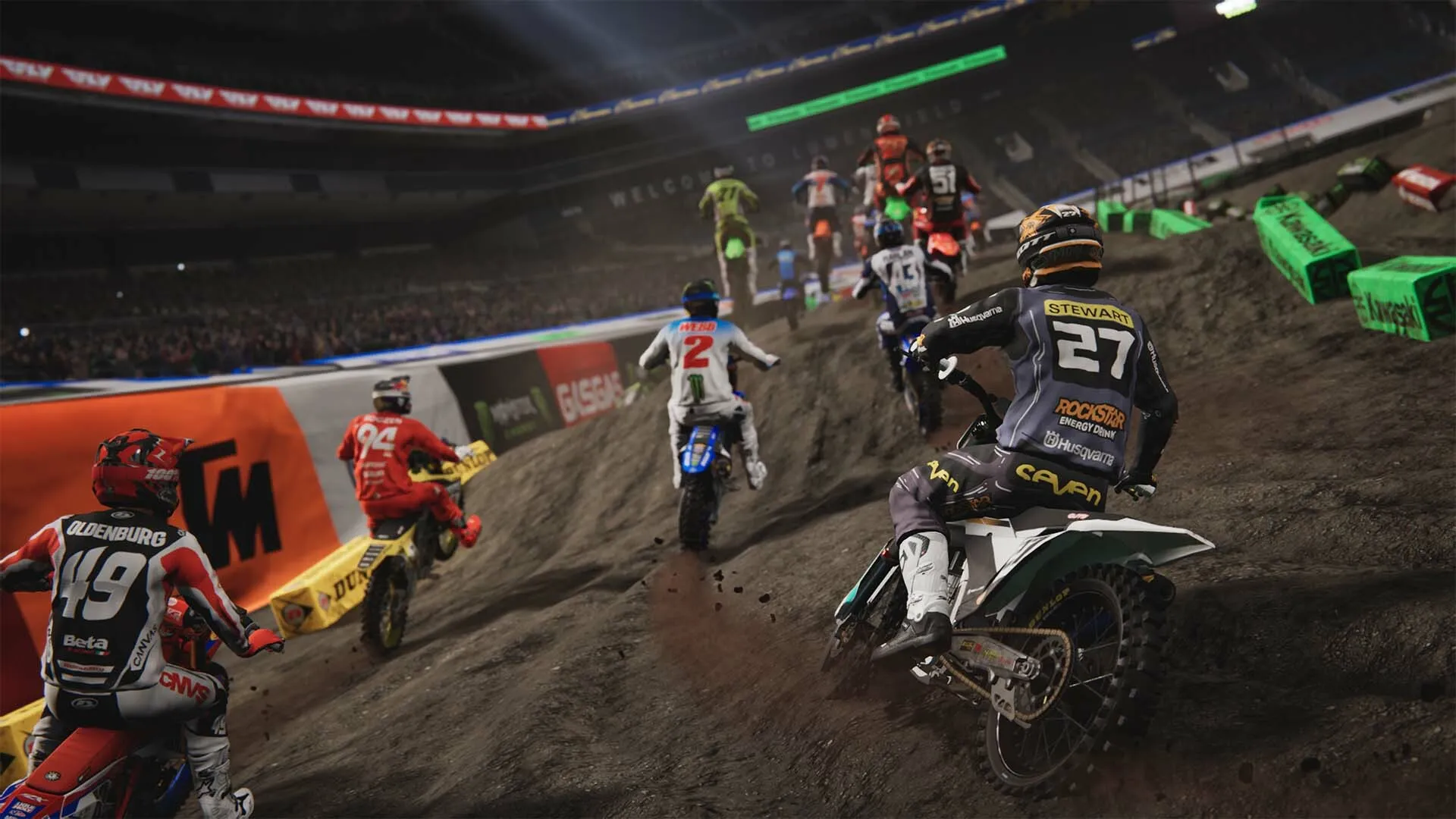Monster Energy Supercross 25 marks the latest chapter in a long-established series, featuring officially licensed content that brings together real-world rosters, meticulously recreated tracks, and authentic bike models. The game establishes its identity through a commitment to accurately reflecting the sport’s heritage. Its integration of official elements from the current supercross season lends an air of familiarity for longtime fans while promising a faithful recreation of high-octane motorbike racing.
This reboot arrives after a deliberate pause in releases, an approach that appears aimed at refining gameplay and adopting the latest advancements in technology. The decision to pause production one year has given the development team space to upgrade the overall racing experience, tightening the simulation aspects and refining the visual presentation. Such measures highlight the franchise’s dedication to improving its foundations and offering a game that caters to both seasoned enthusiasts and newcomers seeking genuine racing action.
Drawing a line between accessible arcade-style play and realistic simulation, Monster Energy Supercross 25 offers a racing experience that demands careful control and precise bike handling. The integration of Unreal Engine 5 plays a significant role in this effort, contributing substantially to the improvement of visuals and the responsiveness of the physics engine. Enhanced environmental effects, such as dynamic track evolution during races, provide a fresh challenge that sets the game apart from many competitors in the genre.
Illuminating the Experience: Visuals and Audio in Supercross 25
The upgrade to Unreal Engine 5 transforms the game’s visual presentation. Material-based lighting and volumetric skies contribute to a scene that feels authentic, with every splash of color and beam of light rendered with care. Dirt textures come across as authentic, capturing every clod and displacement, while stadiums and other venues display a realistic replication of textures and atmospheres.
The particle effects enhance elements such as dust clouds and debris, adding a layer of realism during intense moments. Attention to detail is evident in the reimagined tracks, which present a refined take on official supercross and motocross layouts and rhythm attack courses. Iconic locations, including reworked stadiums, serve as a solid backdrop for the game’s action, and support for user-created tracks opens up possibilities for an ever-expanding library of courses.
Bike and rider models receive a noticeable boost in detail. Bike designs mirror their real-life counterparts with clear attention to authentic branding and customization options. Rider appearances are carefully modeled, although facial details take a back seat since helmets and gear obscure most close-up view during races. Animations for the rider, while serviceable in the heat of competition, suggest there is room for minor refinements in bodily movement during jumps and cornering.
The soundscape offers its own brand of intensity. Engine noises and braking effects deliver an aural punch that complements the tactile feedback from compatible controllers. In-game commentary and background tracks set a tone that aligns well with the live event experience; crowd murmurs and ambient noises heighten the sense of realism, especially as track conditions shift.
Weather conditions actively alter the environment, influencing traction and the feel of the bike on varied surfaces. The game simulates track evolution in real time, with ruts deepening and mud puddles forming, which in turn require players to adjust their approach in mid-race.
Precise Maneuvering: Gameplay Mechanics and Controls
Monster Energy Supercross 25 employs a dual-stick system that demands a high level of coordination. One stick is dedicated to steering and tilting the bike, while the other adjusts the rider’s weight. The control scheme requires players to manage the throttle and braking, with distinct controls assigned to the front and rear brakes.
This setup replicates the experience of handling an actual bike, where every input has a noticeable effect. In practice, the simulation calls for careful weight shifting during tight turns and on uneven terrain, giving the player a deep sense of engagement with the mechanics.
The game’s physics engine provides a convincing simulation of bike responses during jumps, whoops, and rough patches on the track. During jumps, for example, the bike’s behavior changes noticeably, requiring precise timing and control to land safely. The handling on whoops and dynamically evolving terrain is designed in a way that mistakes result in visible slips or crashes.
However, some recovery mechanics soften the consequences, ensuring that players are not immediately penalized for minor errors. This balance creates an engaging experience that appeals to both players who enjoy a pure simulation and those who appreciate some leeway during intense racing moments.
To help players get acquainted with these intricate controls, the game offers a range of training objectives and a detailed in-game glossary of riding terms. The tutorials provide structured challenges that reinforce the mechanics of weight shifting and braking.
Still, these aids have room for improvement, as they sometimes assume prior familiarity with motocross racing, leaving a steeper learning curve for newcomers. Despite this, the training modes give players a clear path to gradually build their skills, resulting in a layered gameplay experience that rewards both persistence and skill refinement.
Charting the Ascent: Career Mode and Progression
In Monster Energy Supercross 25, the career mode offers a structured path from entry-level participation to elite competition. Players begin in a lower-tier division, often referred to as Futures, where victories, solid placings, and the completion of key mission objectives serve as the gateway to higher divisions such as 250 East/West and the demanding 450 class. Success in early races leads to opportunities that encourage players to refine their skills and race strategies, paving the way for tougher challenges.
The game introduces a progression system that incorporates skill points and ability upgrades. Players can invest in improvements that enhance aspects such as cornering precision and air control, allowing for a tailored riding approach. This system provides a personalized touch to each playthrough, much like how certain racing franchises let players fine-tune vehicle attributes.
Alongside individual skill development, team management adds an extra strategic dimension. Selecting a team, negotiating sponsorships, and boosting team synergy directly impact bike performance, creating a competitive edge that makes a difference in high-stakes races.
Social interactions play a significant role in shaping a rider’s trajectory. The incorporation of social media elements means that in-game reputation, measured through metrics like Fame, Reputation, and Team Synergy, affects opportunities and invites from top-tier teams. While the cycle of repetitive races and missions may feel predictable, the options for rider customization and the gradual refinement of skills maintain a level of engagement and replay value that keeps the mode interesting over extended play sessions.
Expanding the Arena: Additional Game Modes and Online Multiplayer
Monster Energy Supercross 25 offers a variety of race formats to suit different play styles. The Championship mode replicates a full racing season experience with a series of events designed to test endurance and consistency over multiple races.
Single event challenges provide quick bursts of competition, ideal for when players have limited time. In contrast, the rhythm-based one-on-one races demand a high level of precision to hit consistent timing, while time trials push players to achieve the best possible lap times.
The online component supports competitive play with crossplay options across PC and major consoles, ensuring that players can match up regardless of their system. Dedicated servers and monthly ranked seasons work to maintain a steady competitive environment. Trophies and seasonal challenges add extra layers of competition, providing incentives that extend participation over longer periods.
The in-game social media feed features promote interaction between competitors. Players can engage in brief exchanges that influence rivalries and team relationships, injecting a dynamic social element into the racing action. These additional game modes and online features combine to offer an enriched multiplayer experience that caters to various tastes in competition and community engagement.
Crafting Your Own Course: Track Editor, Customization, and Extras
The track editor offers a set of tools designed for custom course creation. Players can modify layouts by choosing different jumps, straights, and obstacles. The interface supports basic adjustments for track design, but some options, such as limited size selections and the absence of zoom control or fine-tuned height adjustments, suggest that the editor might not satisfy users who look for precision in their creations.
The option to create and share personal tracks brings a notable boost in replay value. Custom courses can be circulated within the community, encouraging players to experiment and compete on fresh, user-made layouts. This feature has the potential to keep the game active over time and drive regular updates from fans.
Players also find a range of choices for personalizing their characters and bikes. The customization suite includes options for gear, helmets, and suits for the rider, along with various aesthetic tweaks for bike models. This attention to visual detail helps forge a connection between the player and the game, giving each session a personal touch that might remind one of other racing titles that include similar personalization features.
Menu design and interface elements enhance the overall experience. A clean main menu paired with intuitive settings allows for effortless navigation across game modes. The trophy system integrates objectives and rewards that provide additional challenges, which can enhance engagement for those who appreciate extra layers of competition. These extras, while presenting some limitations, contribute solidly to an overall package that appeals to creative players and fans of traditional racing challenges alike.
The Review
Monster Energy Supercross 25 - The Official Video Game
Monster Energy Supercross 25 delivers a strong racing experience that mixes simulation-style controls with accessible arcade nuances. Visual updates powered by Unreal Engine 5 enhance track dynamics and rider customization, offering a tactile challenge and appealing design. A detailed career mode and lively community features add extra layers, though the steep learning curve and limited track editor tools may test some players. A solid ride for fans of the genre.
PROS
- Authentic licensed content with real-world tracks and riders
- Stunning visuals powered by Unreal Engine 5
- Immersive physics and dynamic track conditions
- Detailed career mode with strategic customization
- Robust online multiplayer experience with crossplay
CONS
- Steep learning curve for new players
- Limited precision in track editor tools
- Some repetitive elements in career progression



















































